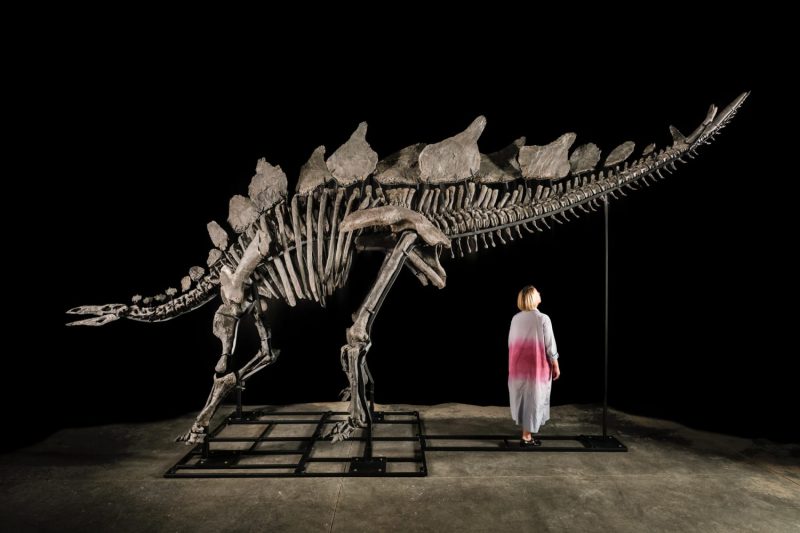In recent news, billionaire hedge fund manager Ken Griffin made waves in the art world by purchasing a rare stegosaurus fossil for a whopping $45 million at an auction sale. This record-breaking acquisition has not only captured the attention of paleontology enthusiasts but has also sparked discussions about the intersection of science, art, and private wealth.
Griffin’s purchase of the stegosaurus fossil raises intriguing questions about the role of wealthy individuals in the preservation and appreciation of historical artifacts. While some may view his acquisition as a vanity investment or a display of extravagance, others argue that private collectors like Griffin can play a crucial role in funding scientific research and conservation efforts.
The $45 million price tag for the stegosaurus fossil also underscores the growing interest in natural history artifacts among the ultra-wealthy. As more billionaires seek to diversify their investment portfolios with unique and storied assets, the market for rare fossils and archaeological finds is experiencing a surge in demand.
Moreover, Griffin’s purchase of the stegosaurus highlights the challenges and controversies surrounding the ownership and trade of cultural heritage items. Critics raise concerns about the ethical implications of private individuals acquiring priceless artifacts, particularly those of scientific or cultural significance. They argue that such transactions can lead to the loss of valuable historical resources and limit public access to important educational materials.
On the other hand, supporters of private collecting assert that it can contribute to the study and preservation of historical treasures. By investing significant sums in rare artifacts, wealthy individuals like Ken Griffin can help finance archaeological expeditions, museum exhibitions, and research projects that might otherwise lack funding.
Ultimately, Griffin’s acquisition of the stegosaurus fossil serves as a reminder of the complex relationship between wealth, art, and history. As the boundaries between public heritage and private ownership continue to blur, it is essential for policymakers, scholars, and collectors to engage in meaningful dialogue about the responsible stewardship of our shared cultural legacy. Only through collaboration and mutual respect can we ensure that rare artifacts like the stegosaurus fossil are valued, protected, and accessible to all.


























